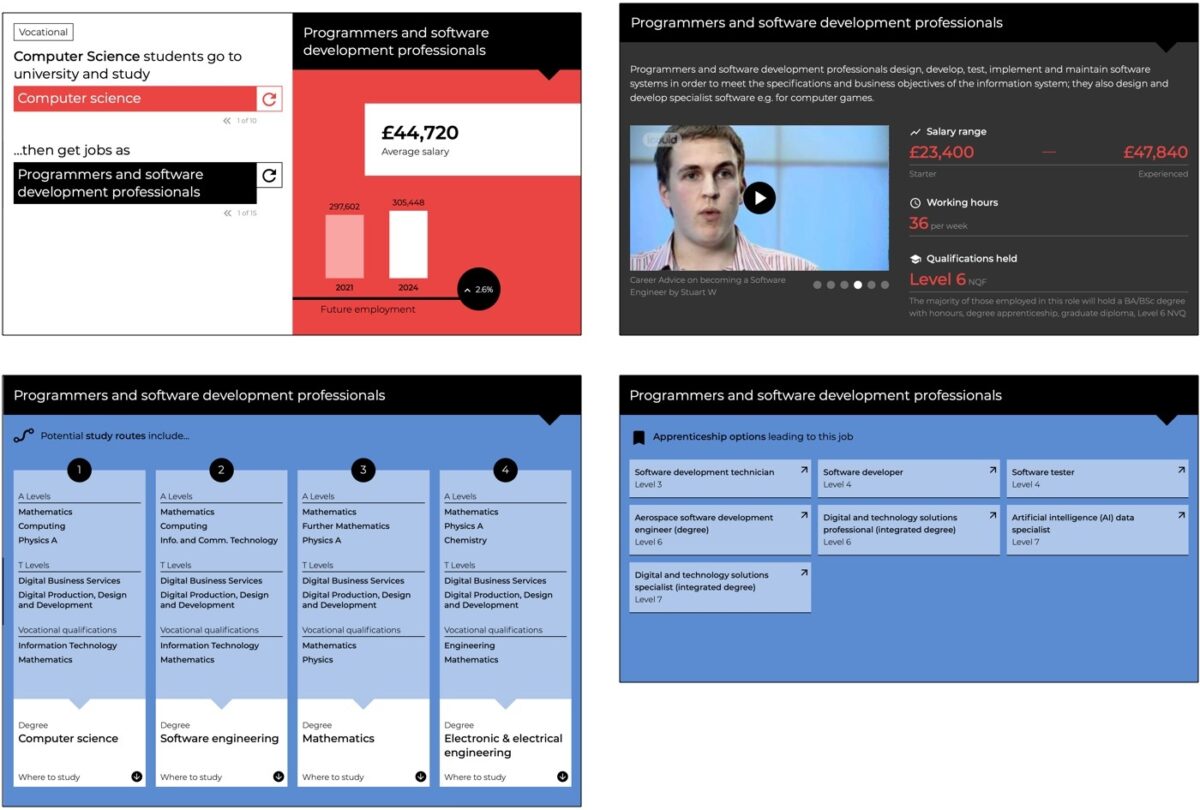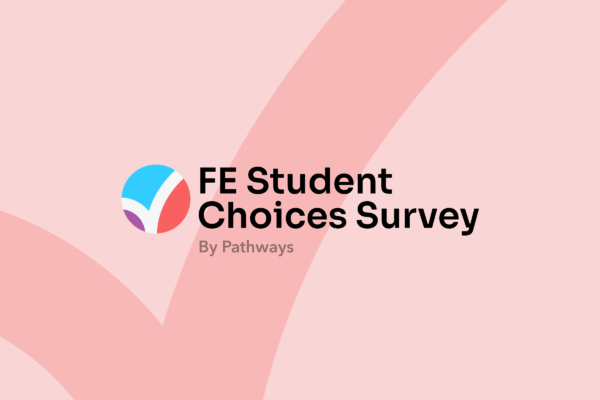Earlier this year UCAS issued a report that highlights how the information and advice students receive in school has an important impact of their subject choices, qualifications, and future careers. Whilst the UCAS report looks primarily at routes into Higher Education, there are interesting findings that are relevant to all post-16 education options.
“Future employment prospects are […] at the forefront of students’ minds when they make their post-16 decisions – almost all (94%) cite this as a key motivation.”
We all know that a student’s post-16 study is only the beginning of their journey. The report highlights the importance of career opportunities including salaries, employability and work/life balance being considered at the earliest stage.
Students and their parents should be encouraged to think early about steps after education, to ensure their satisfaction endures into the years that follow.
I'd have liked road maps of career progression from A Level to University to real world positions and figures of post-employment for different career choices and fields
HE Computer Science student
The UCAS report cites evidence and research that career guidance should be an embedded part of the curriculum. Starting in primary school, through secondary school and into post-16 education students must be supported and made aware of all possible career opportunities and the variety of education pathways available. If you’re familiar with the Gatsby Benchmarks and Primary Futures then you may have already seen similar case studies.
The age at which students start thinking about HE varies
One in three applicants report first thinking about higher education at primary school.
Disadvantaged students are more likely to consider higher education later, which can limit their choices, especially for more selective subjects and higher tariff providers.
This suggests that careers information, advice and guidance (CIAG) should be embedded within primary education.
Decisions are mostly influenced by enjoyment, but employability is increasingly important post-covid
99% of students report making choices at school based on their enjoyment of a subject, and this is also the primary driver of degree choice.
Over 50% report that high graduate employment rates have become more important to them since the start of the pandemic.
Understanding what is important to individuals will help improve support for their decision-making.
There is a need for earlier, broader, and personalised careers information, advice and guidance (CIAG)
Two in five students believe more information and advice would have led to them making better choices.
Almost one in three students report not receiving any information about apprenticeships from their school.
Motivated by career
When looking at graduate employment, the report details how applicants on vocational subjects are particularly motivated by pursuing a specific career. This leads to higher graduation employment rates after university with 73% in full or part-time employment 15 months after graduation, compared to 68% of students with A levels.
This table shows how applicants for vocational subjects who are career-focused tend to experience higher graduation employment rates:
| Subject area | Proportion of graduates in full-time employment 15 months after graduating | Proportion of students motivated by pursuing a particular career |
|---|---|---|
| Subjects Allied to Medicine | 69% | 64% |
| Veterinary Science | 91% | 85% |
| Medicine and Dentistry | 80% | 76% |
| Education | 67% | 63% |
Making careers information accessible
Many of the recommendations in the report correlate with our own research and experience of working in the Further Education sector.
- The need to present high quality and accurate careers information
- To inform students and their parents on possible routes to a career
- To ensure students understand their options and ultimately apply onto the right course
“The individuality of student choice means it is critical to ensure the range of available information sources are joined-up and effectively communicated to students in a personalised way.”
Did you know that for every occupation in Pathways, you can see:
- Detailed employment data for salary, predicted employment, typical working hours, common qualification level
- Regional labour market information
- Regional live job vacancies
- Potential study routes including A Level, T Level and vocation qualifications from Level 3 through Higher Education
- Local institutions offering related HE courses
- Apprenticeship options

Pathways clearly links your courses with the jobs students went on to do.
For each course that can be over 50 different careers. Each with this same level of information and all based on real student progression data.
Read the full UCAS ‘Where Next?’ report.






